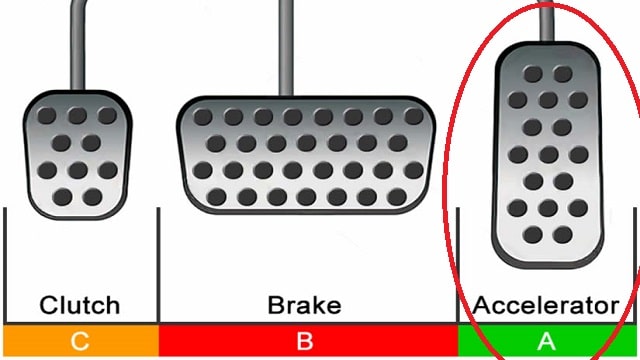Accelerator Meaning
Accelerator is the name given to those devices or mechanisms that serve to accelerate or make a movement faster.
Accelerators have the virtue of increasing the revolutions of internal combustion engines, and thus making the vehicle increase its speed. With accelerators, the power of the engines can be controlled. Examples: “Don’t press the accelerator so hard, because you can cause a traffic accident.”
In internal combustion engines, whose thermodynamic cycle is the Otto cycle, the accelerator is usually a butterfly valve, mechanically connected to the pedal or lever. In fuel injection engines, the valve is located in the intake manifold; in carburetor engines, it is located at the base. Diesel engines do not have this valve because it is unnecessary to control the volume of air or mixture.
Particle accelerators, whose basic example is the ray tube in old televisions, are currently used in nuclear research, with major applications in the medical field, especially in laser treatments, in an attempt to obtain energy without producing radioactive nuclear waste.
Particle accelerators can be linear or circular and use electromagnetic fields to accelerate charged particles to very high speeds and collide with other particles to generate new particles, which are very unstable and short-lived, lasting less than a second. This allows the study of the original particles, which is done through the new ones that were produced.
Linear accelerators operate by applying an alternating electric current to a set of tubes with plates, which are arranged in a linear fashion. The plates accelerate when the particles approach each other because their electric field is opposite. When they cross the plate, the polarity changes, accelerating the next plate, reaching the speed of light in the process.
Circular particle accelerators are more complex and achieve greater acceleration in a smaller space by using magnetic and electric fields. However, the greater the acceleration achieved, the more energy the particle loses.
Accelerator Meaning in Hindi
एक्सेलरेटर(Accelerator) उन उपकरणों या तंत्रों को दिया गया नाम है जो गति बढ़ाने या गति को तेज़ करने का काम करते हैं।
एक्सिलरेटर में आंतरिक दहन इंजन के चक्करों को बढ़ाने का गुण होता है, और इस प्रकार वाहन की गति को बढ़ाता है। एक्सेलरेटर के साथ, इंजन की शक्ति को नियंत्रित किया जा सकता है। उदाहरण: “एक्सिलरेटर को इतना ज़ोर से न दबाएँ, क्योंकि आप ट्रैफ़िक दुर्घटना का कारण बन सकते हैं।”
आंतरिक दहन इंजन में, जिसका थर्मोडायनामिक चक्र ओटो चक्र है, एक्सेलरेटर आमतौर पर एक तितली वाल्व होता है, जो यांत्रिक रूप से पेडल या लीवर से जुड़ा होता है। ईंधन इंजेक्शन इंजन में, वाल्व सेवन मैनिफोल्ड में स्थित होता है; कार्बोरेटर इंजन में, यह आधार पर स्थित होता है। डीजल इंजन में यह वाल्व नहीं होता है क्योंकि हवा या मिश्रण की मात्रा को नियंत्रित करना अनावश्यक होता है।
कण त्वरक, जिसका मूल उदाहरण पुराने टेलीविज़न में रे ट्यूब है, वर्तमान में परमाणु अनुसंधान में उपयोग किया जाता है, जिसमें चिकित्सा क्षेत्र में प्रमुख अनुप्रयोग हैं, विशेष रूप से लेजर उपचार में, रेडियोधर्मी परमाणु अपशिष्ट का उत्पादन किए बिना ऊर्जा प्राप्त करने के प्रयास में।
कण त्वरक रैखिक या वृत्ताकार हो सकते हैं और आवेशित कणों को बहुत तेज़ गति से त्वरित करने के लिए विद्युत चुम्बकीय क्षेत्रों का उपयोग करते हैं और नए कणों को उत्पन्न करने के लिए अन्य कणों से टकराते हैं, जो बहुत अस्थिर और अल्पकालिक होते हैं, एक सेकंड से भी कम समय तक चलते हैं। यह मूल कणों का अध्ययन करने की अनुमति देता है, जो नए कणों के माध्यम से किया जाता है जो उत्पादित किए गए थे।
रैखिक त्वरक प्लेटों के साथ ट्यूबों के एक सेट पर एक वैकल्पिक विद्युत प्रवाह लागू करके संचालित होते हैं, जो एक रैखिक फैशन में व्यवस्थित होते हैं। जब कण एक दूसरे के पास आते हैं तो प्लेटें तेज हो जाती हैं क्योंकि उनका विद्युत क्षेत्र विपरीत होता है। जब वे प्लेट को पार करते हैं, तो ध्रुवता बदल जाती है, जिससे अगली प्लेट तेज हो जाती है, इस प्रक्रिया में प्रकाश की गति तक पहुँच जाती है।
वृत्ताकार कण त्वरक अधिक जटिल होते हैं और चुंबकीय और विद्युत क्षेत्रों का उपयोग करके एक छोटे से स्थान में अधिक त्वरण प्राप्त करते हैं। हालाँकि, जितना अधिक त्वरण प्राप्त होता है, कण उतनी ही अधिक ऊर्जा खोता है।

